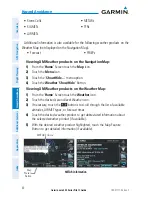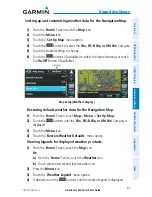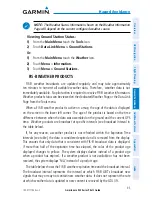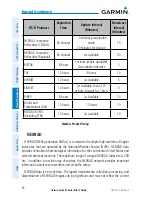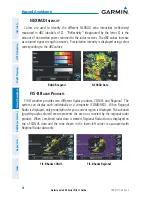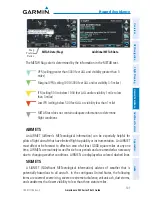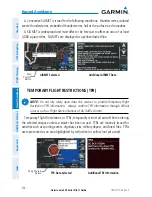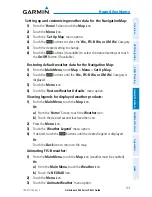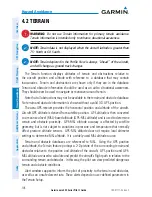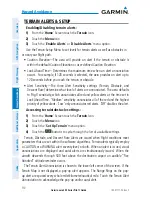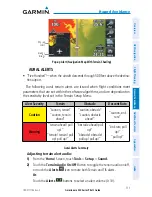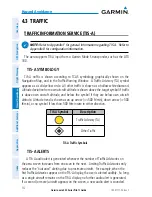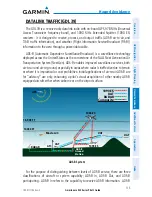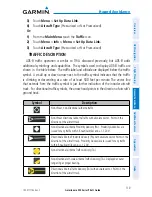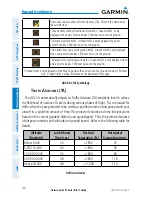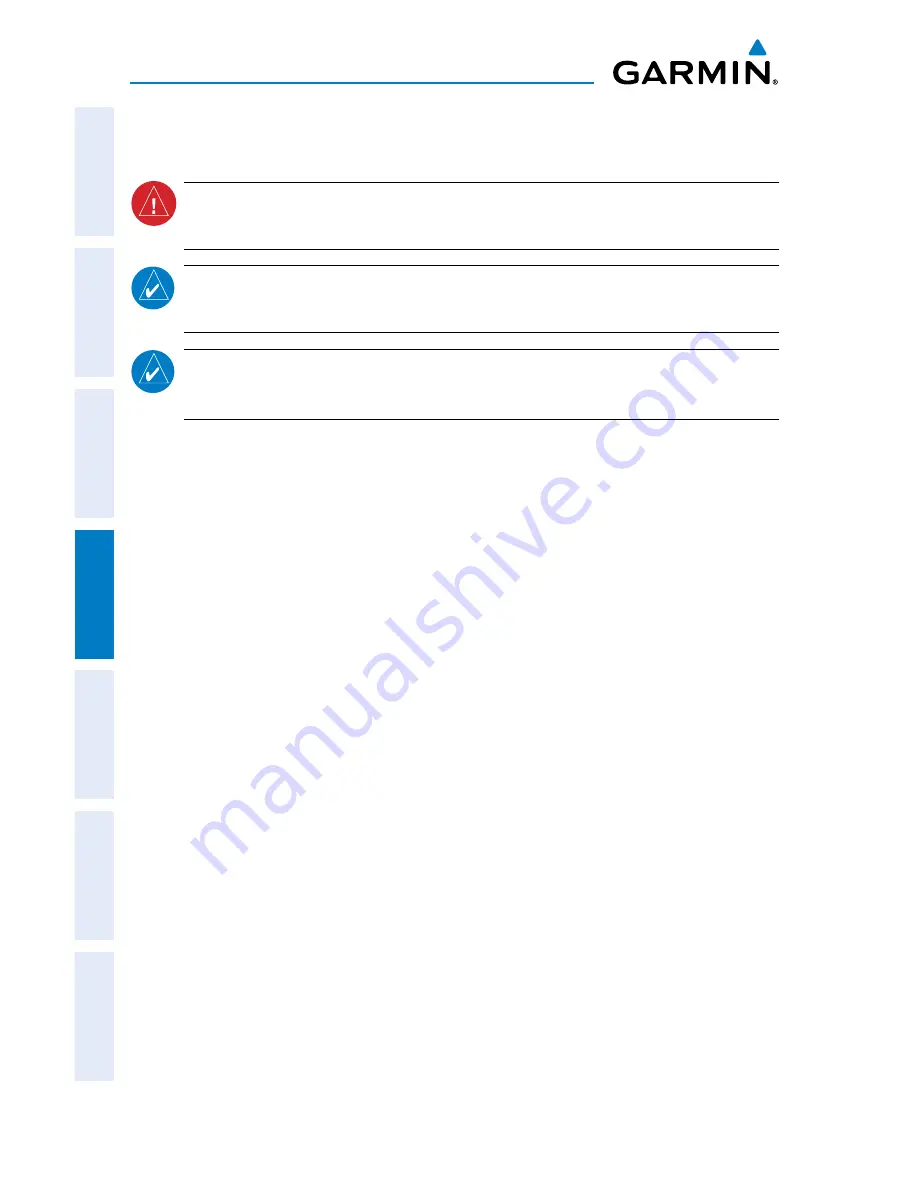
Garmin aera 500 Series Pilot’s Guide
190-01117-02 Rev. C
106
Hazard Avoidance
Overview
GPS Navigation
Flight Planning
Hazar
d A
voidance
Additional F
eatur
es
Appendices
Index
4.2 TERRAIN
WARNING:
Do not use Terrain information for primary terrain avoidance.
Terrain information is intended only to enhance situational awareness.
NOTE:
Terrain data is not displayed when the aircraft latitude is greater than
75
°
North or 60
°
South.
NOTE:
Terrain depicted in the Profile View is always “ahead” of the aircraft,
and will change as ground track changes.
The Terrain function displays altitudes of terrain and obstructions relative to
the aircraft position and altitude with reference to a database that may contain
inaccuracies. Terrain and obstructions are shown only if they are in the database.
Terrain and obstacle information should be used as an aid to situational awareness.
They should never be used to navigate or maneuver around terrain.
Note that all obstructions may not be available in the terrain and obstacle database.
No terrain and obstacle information is shown without a valid 3-D GPS position.
The aera GPS receiver provides the horizontal position and altitude of the aircraft.
Aircraft GPS altitude is derived from satellite position. GPS altitude is then converted
to a mean sea level (MSL)-based altitude (GPS-MSL altitude) and is used to determine
terrain and obstacle proximity. GPS-MSL altitude accuracy is affected by satellite
geometry, but is not subject to variations in pressure and temperature that normally
affect pressure altitude sensors. GPS-MSL altitude does not require local altimeter
settings to determine MSL altitude. It is a widely-used MSL altitude source.
Terrain and obstacle databases are referenced to MSL. Using the GPS position
and altitude, the Terrain feature portrays a 2-D picture of the surrounding terrain and
obstacles relative to the position and altitude of the aircraft. GPS position and GPS-
MSL altitude are used to calculate and predict the aircraft’s flight path in relation to the
surrounding terrain and obstacles. In this way, the pilot can view predicted dangerous
terrain and obstacle conditions.
Alert windows appear to inform the pilot of proximity to the terrain and obstacles,
as well as an unsafe descent rate. These alerts depend on user-defined parameters in
the Terrain Setup.
Summary of Contents for aera 560
Page 1: ...models 500 510 550 560 Pilot s Guide...
Page 2: ......
Page 3: ...OVERVIEW GPS NAVIGATION FLIGHT PLANNING HAZARD AVOIDANCE ADDITIONAL FEATURES APPENDICES INDEX...
Page 4: ......
Page 10: ...Garmin aera 500 Series Pilot s Guide 190 01117 02 Rev C Warnings Cautions Notes Blank Page...
Page 12: ...Garmin aera 500 Series Pilot s Guide 190 01117 02 Rev C RR 12 Blank Page...
Page 229: ......

